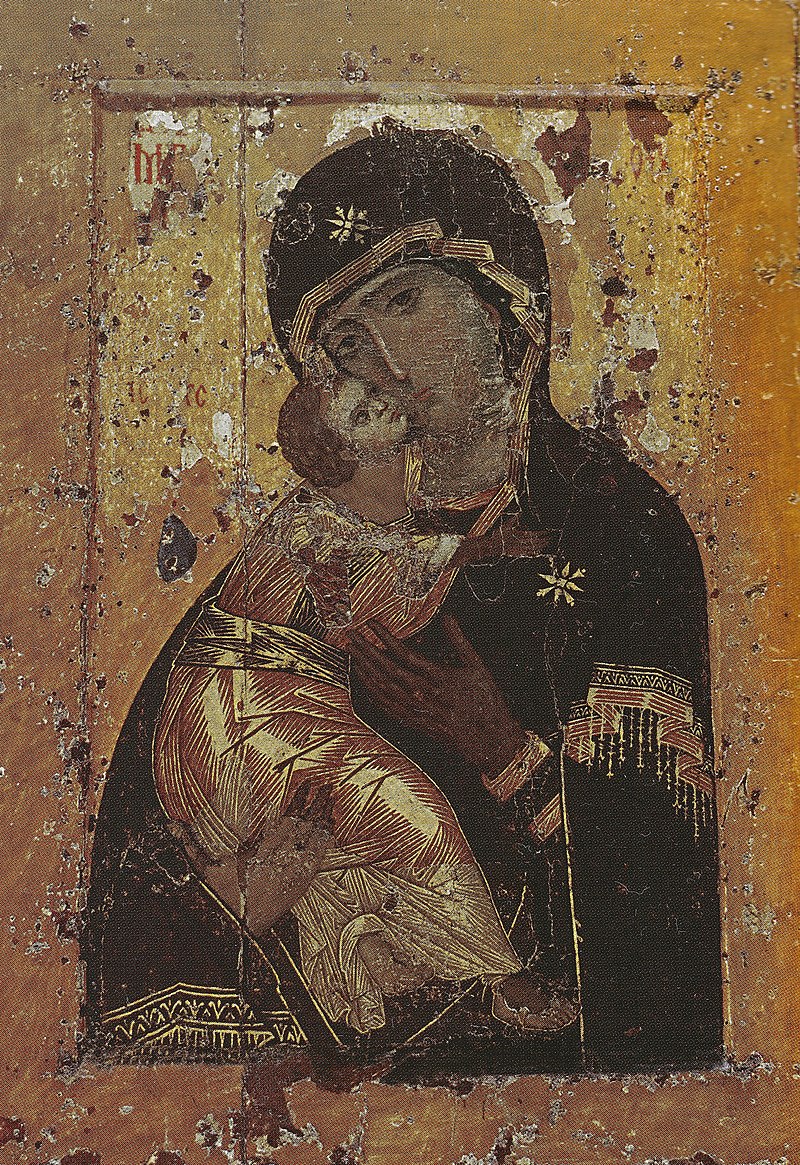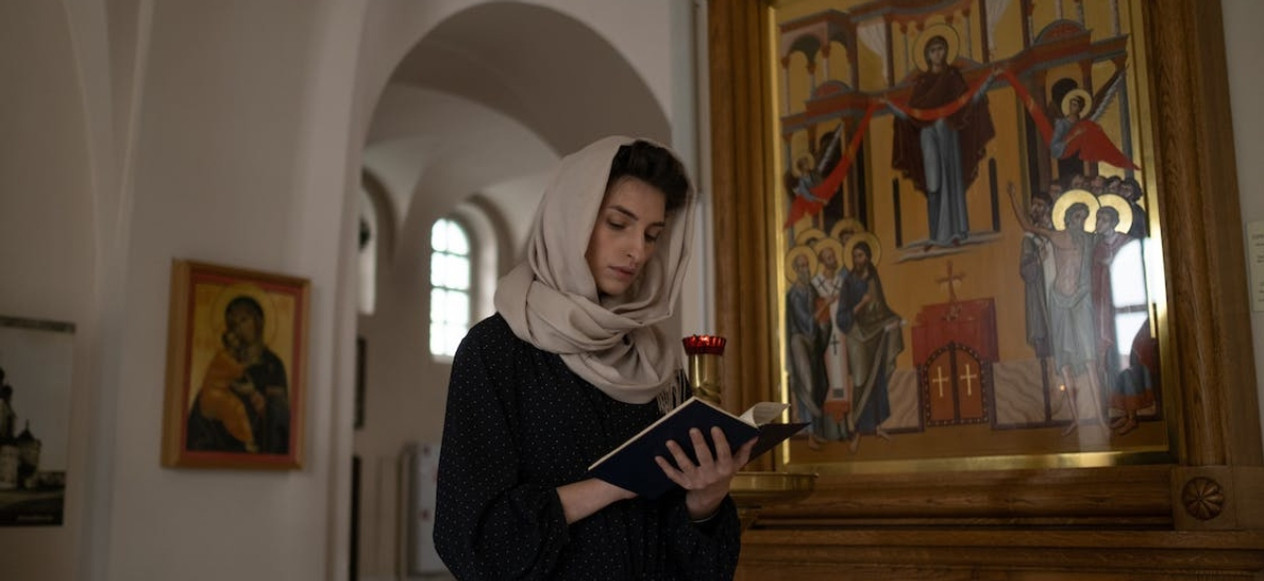Icons - A Beginner's Guide
Aug 17, 2023 by Cheryl Hadley
Man has always desired to see God. After all, we are visual learners and seekers of truth. God placed those yearnings within us, and since ancient times, the Church has understood them, providing images for the formation and inspiration of the faithful.
Long ago, when the ability to read was uncommon, icons were among the first visual representations of our Faith. Here's an introduction to icons, and their contribution to visio divina, or "divine seeing."
A Brief History
In ancient times, the pagans made idols for themselves in the form of statues or images, but the ancient Israelites were forbidden to make anything in God's likeness. With the Incarnation, God became man, and His image became a visual reality as He shared time and space with us.
The first followers of Christ recognized that if He could be seen, He could also be represented by images and depicted in art. They began using images to teach and inspire.
At first this was not universally accepted. Many still held to the old covenant belief that reproducing His image was a form of idolatry, or at least an affront to all that was sacred in the identity of God.
[[50137,50002]]
Over time, the use of icons became a means of formation and an inspiration to prayer for Christians. Muslims eventually conquered vast tracts of the Roman Empire, and while images were central to Christian worship, they were forbidden by Islam.
In 726 A.D., the Christian Emperor of the East, Leo III, banned the use of images, calling for their destruction in a campaign known as iconoclasm. His reasons are still debated, but the impact was to eliminate icons in Christianity.
After years of violent opposition, intense theological debate, and a sacred Council, images were restored to the Church and the faithful. The Eastern Church celebrates this victory every year as the "Triumph of Orthodoxy."
[[38912,39745,]]
St. John Damascene was one of the most vigorous defenders of iconography. Living in one of the many places of the Roman Empire under Muslim rule, he championed the return of images in a lengthy defense still cited today as one of his most important writings. He helped change the course of history, returning icons to their rightful place in our tradition.
"The invisible things of God have been made visible."
- Defense Against Those Who Oppose Holy Images by St. John Damascene
[[49992,996]]
Windows Into the Heavens
Like all sacred art, the goal of icons is to lead the viewer into deeper reflection and prayer, and to make the divine present in some way to the viewer. Iconography was one of the original, man-made windows into heaven.
These powerful ancient art forms are prayerful invitations to both artist and viewer. They are created in prayer. Each brush stroke is a meditation and a part of the prayer, so silence and peace is an important part of the creative process—just as sacred silence is important in prayer.
I do not venerate matter, I venerate the fashioner of matter, who became matter for my sake and accepted to dwell in matter and through matter worked my salvation, and I will not cease from reverencing matter, through which my salvation was worked.
- On the Divine Images by St. John Damascene

Icon of Our Lady of Vladimir
The First Icons of Christ & Our Lady?
From antiquity, Holy Mother Church has preserved the tradition that St. Luke the Evangelist was the first to write an icon of the Blessed Virgin Mary with her blessing, so it could be shared with the faithful believers of Christ.
Byzantine historical sources, liturgical writings, and epistles to Constantine and King Theophilus of Antioch, both of whom eventually received the icon, seem to confirm this history, back to the 8th C.
While the order of events surrounding the transfer and relocation of the icon often varies, the essential elements of the tradition remain. This icon is now known as Our Lady of Vladimir. It was said to have been written by St. Luke on a board from the table at which the Holy Family ate their meals.
[[5757]]
Tradition holds that St. Luke wrote around twenty icons of Our Lady. Eight of those reside in Eastern Churches, and others in the West.
These can be seen in locations such as the Tretyakov Gallery, Moscow; Czestochowa, Poland; Kykkos Monastery, Cyprus; the Cathedral of Smolensk, Russia; Gelata Dormition Monastery near Kutaisi, Georgia; Santa Maria Maggiore and Santa Maria del Popolo, Rome; Santa Maria della Grazia, Milan; and Santa Maria della Consolazione in Todi, Italy, among others.
Tradition holds that the origin of the first icon of Christ, known as the Mandylion, goes back to Christ Himself. King Abgar of Edessa, located in continental Greece, wrote to Jesus asking Him to visit the king to cure him of an illness. History records that Christ declined the invitation, but sent the Apostle Jude, bearing His image. The king was healed.
[[39731,39588]]
Writing an Icon
It is said that we do not simply look at icons; we "read" them. Similarly, an iconographer does not "paint" an icon, but rather, "writes" it.
This is because the iconographer is not creating something new, but transmitting a spiritual and artistic tradition and the visual theology contained in it. He takes the bones of his work from icons made before him, adding his own interpretation yet keeping the essence intact to continue this tradition. In this way, icons are a living link to the earliest iconographers—and even to Our Lord, Our Lady, and the saints themselves.
In the ancient method, writing the icon starts with a wooden board called an ark (as in the Ark of the Covenant). Then a special layer of cheesecloth is added, onto which a gesso, or primer, is brushed. The drawing is etched into the gesso with a special tool, the ark is burnished, sanded to smooth perfection, then gilded with 24-carat gold leaf.
The iconographer breathes onto the gold, to seal it to the ark. Symbolically, this may represent the Holy Spirit, and recall the breath of God, as He breathed life into Adam. Powdered pigments are then mixed with egg emulsions to form the paints, which are applied as the iconographer prays and writes the icon in the traditional method.
In ancient times, icons often contained as many as 30 layers of pigment, so they were preserved for many generations. They had to be durable, because they were carried in processions, kissed in veneration, and exposed to smoke and soot from candles and oil lamps.
They were the primary images of veneration of Christ, Our Lady, and the saints, and they were of precious value.
Though there are stylistic differences in Greek, Russian, Ukrainian, Romanian, and African iconography, the goal is the same: lifting the heart and mind to God.
These treasured icons represented ancient prayers, craftsmanship, and divine inspiration to the faithful.
[[29531,23633]]
Iconography Today
While many iconographers still practice the ancient form of writing, other adaptations have taken place over time. Icons and icon images are now reproduced using photomechanical silk-screening techniques and other printing and painting technologies.
While these may not be fashioned completely by human hands, they allow many more viewers to experience the rich and lively history and ancient beauty of iconography. Aesthetics may differ, but the original purpose of visio divina remains.
Here at The Catholic Company, many of our icons are written in Russia, Ukraine, Greece, and Italy, some still written by hand. The images come in a variety of forms, not all on the ancient wooden arks of long ago.
We carry traditional wooden icons and Eastern Orthodox icons often embellished with the flourishes of regional styles and symbolism. Some contain the elaborate geographic patterns and symbols of the Byzantine tradition; others are more traditional.
[[49988,38128]]
We also have a unique and lovely selection of Russian and Ukrainian mini-shrines you can display anywhere, from a doorknob, to the wall, to a small table top. You can wear them, hang them in the car, or place them on a desk for daily inspiration. Some contain jeweled accents and encapsulated incense according to the Eastern tradition.
[[46998,47086, 37762]]
Icon imagery is also available in tapestries and other forms that can be hung on the wall or used for practical purposes.
[[46637,50963]]
[[50373,12658]]
The imagery is a powerful reminder of the timeless nature of our faith. It is a testimony to the strength and devotion of the faithful and their desire to see and know God. Many of the original images had to be hidden and protected during times and in places where iconography was suppressed.
[[33220,49136]]
The stylized icon images, even when in traditional form, still evoke reverence, inspiration, and prayer today. They are also a fascinating record of the history of the Eastern Church and the powerful influence of iconography among the first followers of Christ.
[[50375,40385]]
Icons, a Gift to the Church
Icons are a rich and powerful symbol of the perseverance, hope, and faith of the ancient Church. In that spirit, may our desire to see God never end. May our zeal to worship Him, while revering His Holy Mother, the saints, and the angels be a legacy we pass down, to ensure the enduring strength of Christianity.
As we acknowledge the remarkable place of icons in her history, may we also celebrate the many ways that the Church has provided inspiration for her children over time.





